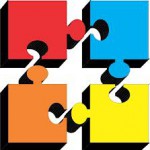 Why feed rate charts do not tell the full story.
Why feed rate charts do not tell the full story.
New laser cutting equipment often delivers faster production capabilities. In order to evaluate these capabilities correctly, it is important to study how they apply in your production. Often engineers are tasked with finding the technical specifications for each of the competing machines and collecting them on a spreadsheet. Feed rate charts are typical specifications in determining speeds, but they do not tell the entire story in terms of overall productivity gains.
Why don’t feed rate charts tell the entire story? Missing is critical machine dynamic criteria such as acceleration and deceleration during positioning and cutting, as well as piercing times, which are very important to the end result. Yes, feed rates are important but only where the machine reaches full speed depending on the length of the line segment or the size of the feature. Increasing the feed rate in small features or in short distances that require constant decelerations and acceleration does not affect the overall times because the maximum feed rate is never achieved. Having a higher accelerating motion system will provide you with the ability to reach the speeds in a much shorter distance and will shorten the overall part time. When cutting long line segments the feed rate is achieved – and so, the longer the line segment or larger the features, the more feed rates have a direct impact on the overall part time.
Piercing through the material is another critical aspect contributing to overall part times. If a few seconds are gained during each pierce because of the piercing technology or the energy of the laser beam, this too has a direct impact on the overall part time. Piercing technology today compared to even 5 years ago is amazingly different for some manufacturers. For example it used to take 12 seconds or so to pulse pierce half inch steel and then a second or two was added to the time to make sure it was through the material. Today we are piercing through half inch steel with the BySprint Fiber and the Fiber 6000 laser source in just 1.3 seconds! This is more to do with the technology of RPP (regulated pulse piercing) than the power of the laser itself, although this also helps.
Also contributing to shorter pierce times is the cut control feature which will monitor when the laser has finished piercing through the material, eliminating the need for additional time. Once the laser beam is detected to be through the material, the machine begins to immediately cut the feature, saving valuable time.
So as we have seen, there is more to consider in overall productivity than can be found in a simple feed rate chart. The overall evaluation of productivity is best validated through a time study initially and then confirmed with a live demonstration. Not only do time studies incorporate feed rates but they also include all of the different aspects of machine dynamics and laser technologies that have been incorporated into that specific machine. Seeing the machine in action and confirming the real productivity gain is the only way to validate the effectiveness of new equipment.
By Frank Arteaga, Head of Product Marketing, NAFTA Region
Bystronic Inc., Elgin, IL – Voice.bystronic@bystronic.com
